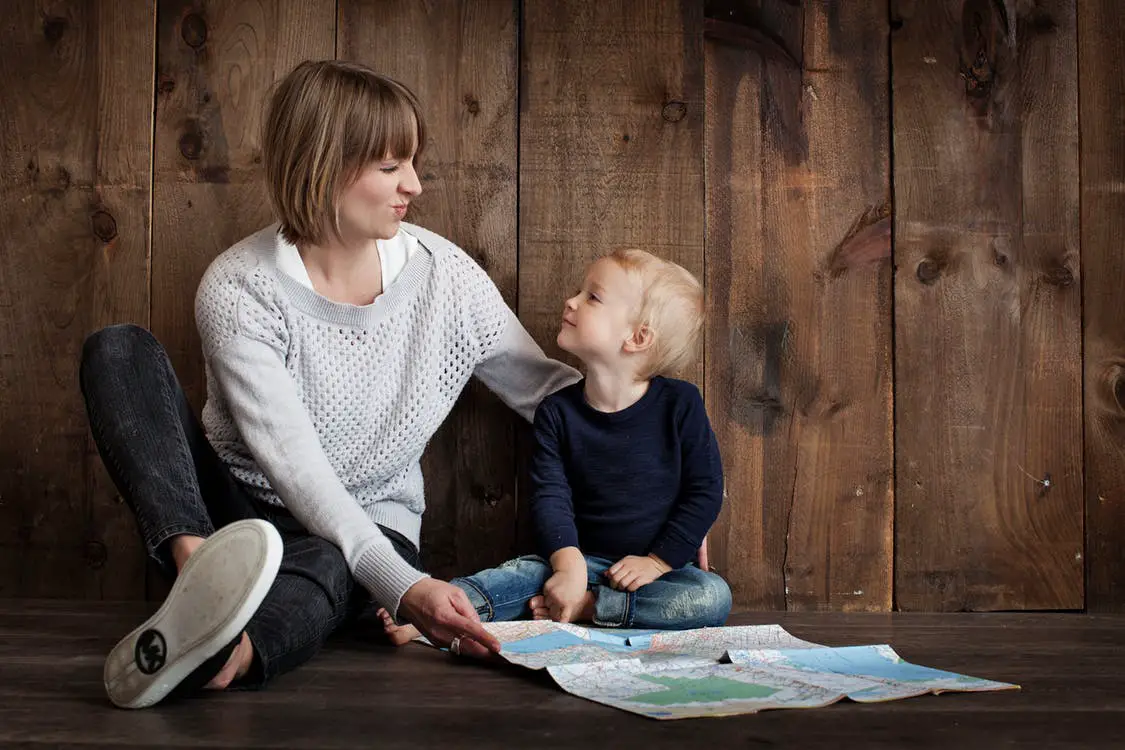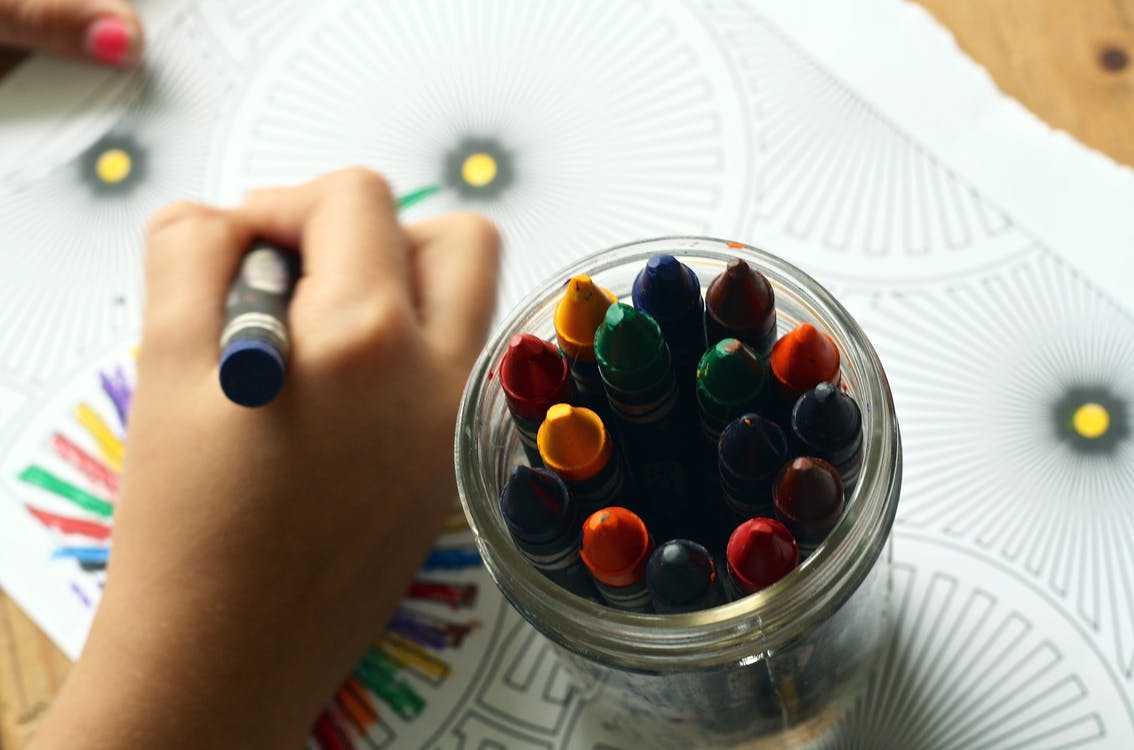![How To Deal With Sensory Overload [9 Tips For Overstimulation]](https://happyrubin.com/wp-content/uploads/2019/12/ik-ben-overprikkeld-150x150.jpg)
Interactive Reading: How? 53 Tips [Checklist]
![Interactive Reading: How? 53 Tips [Checklist]](https://happyrubin.com/wp-content/uploads/2016/08/interactief-voorlezen4.jpeg)
Interactive reading to toddlers: an important skill to contribute to children’s language development. Here you will find an explanation and 53 reading tips for each phase of a story. Read on for these tips about reading to (young) children.
Interactive reading in practice: all 53 tips to try with toddlers now
Part 1 – If you are not reading to your own child, for example for a foreign family

- Over time, you have to take fewer and fewer books with you so that the parents get more and more independent books from the library, until they do it completely.
- Encourage the parents of your reading child to borrow books.
- Have the parents participate in the reading in any way.
- Ask the parents if there is already reading. What does the child like?
- Parents always participate.
- The book is in line with the interests of the child. Ask the interests of the parents.
- Show the books to the parents.
Part 2 – Introduce the book

- The book is still in the bag. Let the children guess what the book is about. For example: it is about an animal…, the animal has 4 legs…, the animal calls meow.
“Hokus Pokus Pilatus Pas… I wish there was a cat book in the bag…” Then have the child take the book out. - Bring several books and let the child choose.
- Discuss cover and title. ‘What do you think will happen, what do you think the story will be about?
Well, shall we go and see? ‘ - What do you already know about {this topic}?
- Enter a listening question: ‘In the book 3 balls will appear in a minute, what colors are they? Pay attention!’
- Start as soon as possible, especially with a busy group.
Part 3 – Know the little techniques of reading aloud

- Let the child choose the book.
- Look at the child regularly while reading.
- Let the child watch the book.
- Participate, for example roar if the main character does too.
- Gestures and portraying.
- Using different voices. A good example are the voices of Sesame Street.
- Have the child read to you too.
- Listening Response: Do not immediately respond verbally to a comment. For example just raising eyebrows, “mmmm, oh?”
- Make a cardboard booklet with the child’s name on it: “We’re going to make our own story! Are you going to draw? Then I write. ”
- EUREKA trick: spontaneous prompting: “What song are we going to do?” “Oh, I have a really good idea guys: let’s …” “You know that already?”
- Have children sit when explaining something.
Part 4 – Ask questions

- Pointing questions: can you point the ball?
- Counting questions: how many balls are there?
- Yes / no questions: is the lion on the table?
- Who / What Questions: Who will shoot the ball? Who does the lion want to go to?
- Why / how ?: Why does the lion want that so badly? How is the lion going to do that?
- Contrary questions: the ball is still in the bowl (in reality the ball is somewhere else)?
- Talk about the main problem in the story: “How is that solved?” And ask other questions about it.
- “And how do penguins do?”
- Ask questions about emotions: “How do you think little bear feels?” “And what is he? He is a bit sad! (imitating with tears) “
Then you probably also know how she feels.” - Look expectantly at a question; what do you think would happen?
- Also improvise some questions.
- Predictions: what do you think will happen next?
- What would you do if you were lost?
Part 5 – Explain difficult keywords

- Explain or ask questions about what words mean (“I don’t know, do you know?”).
- Asking questions about personal experiences with that word. For example, the word is peeking. “Have you ever peeked?”
- Portray, for example, verbs such as peeking, and emotions. If necessary, do it first, and the child can participate.
- To experience.
- Show picture.
- Talk about it.
- To draw.
- To hear.
- Teaching something to someone else: retelling. This is also a valuable skill for later.
- Sometimes you don’t have to dwell on every word and you can just paraphrase and go on.
- Emotions can cause embarrassment. The solution: talk about feelings in the third person: “The dog is in love. What does he feel then? ‘
Part 6 – Clean up

- Always talk: Is it understood? Link to own experiences.
- Have the child retell or summarize the story.
- Let the child earn stickers for each reading.
- Creative processing: song, story reenactment, coloring picture, game, drawing or language game.
That was the reading tips checklist – Why is reading so important?
If you want your kids to be intelligent, read them fairytales. If you want them to be brilliant, read them more fairytales.
– Albert Einstein
- Reading with young children improves their brain development.
- It gives the child a head start.
- It deepens the bond between the child and the adult.
- Reading gives the child more self-confidence.
- Reading is useful before going to bed.
- Reading aloud stimulates the child’s imagination.
- Reading aloud gives the child a greater understanding of language.
- A young reader, read more later too!
- It is a lot of fun to read together.
- You show that you are a role model.
More about interactive reading (Article!)

This was the article with a checklist for interactive reading. Also take a look at the extensive article on metaphors to take your reading skills to a completely different level.

![5 Best Self Care Tips For College Students [#1 Advice]](https://happyrubin.com/wp-content/uploads/2021/09/the-best-self-care-tips-for-college-students-440x264.jpg)
![How To Stick To New Year’s Resolutions: 9 Tips [Smart & Sure Ways]](https://happyrubin.com/wp-content/uploads/2019/12/tips-voor-goede-voornemens-440x264.jpg)
![How To Stop Being So Hard On Yourself [9 Great Tips]](https://happyrubin.com/wp-content/uploads/2019/12/we-moeten-zoveel-van-onszelf-en-anderen-150x150.jpg)

![19 Best Ice Breaker & Get-To-Know-Eachother Games [Fun & Simple]](https://happyrubin.com/wp-content/uploads/2018/02/leukste-ijsbrekers.jpeg)
![Becoming More Social: 41 Tips [Improving Social Skills] [List]](https://happyrubin.com/wp-content/uploads/2018/06/sociale-vaardigheden1.jpeg)
![How to start a conversation with anyone: 15 tips [Making contact]](https://happyrubin.com/wp-content/uploads/2017/08/gesprekstechnieken1.jpeg)
![372 Friend Tag Q&A Questions [Best Friend Quiz]](https://happyrubin.com/wp-content/uploads/2019/05/best-friend-tag-vragen-voorbeelden.jpg)



![Clingy & controlling behavior of partner/date [Extreme examples]](https://happyrubin.com/wp-content/uploads/2020/06/claimerig-gedrag-van-partner-eigenschappen-en-voorbeelden-150x150.jpg)

![How to recognize if a man is in love [Signals & his body language]](https://happyrubin.com/wp-content/uploads/2020/05/verliefd-gedrag-van-mannen-herkennen-150x150.jpg)


![Free will and religion / theology [Verses & Quotes on free will]](https://happyrubin.com/wp-content/uploads/2020/10/religion-on-free-will-quotes-1050x640-1-150x150.jpg)

![Dealing With Setbacks & Hardship [Lessons & Examples]](https://happyrubin.com/wp-content/uploads/2018/11/omgaan-met-tegenslag-tips-hoe-dan.jpeg)
![NLP Agreement Frame: Use these exact sentences [Examples]](https://happyrubin.com/wp-content/uploads/2020/10/agreement-frame-nlp-1125x640-1-440x264.jpeg)
![122 Best Comebacks In Any Situation [Best Examples]](https://happyrubin.com/wp-content/uploads/2020/06/beste-comebacks-technieken-tips-440x264.jpg)
![Using Hypnosis to Stop Smoking [HowTo]](https://happyrubin.com/wp-content/uploads/2020/05/stoppen-met-roken-door-hypnose-150x150.jpg)
![Presuppositions language pattern: meaning & examples [NLP]](https://happyrubin.com/wp-content/uploads/2020/04/wat-zijn-vooronderstellingen-150x150.jpg)
![Peripheral Vision: Meaning & Exercise [Essential Skill]](https://happyrubin.com/wp-content/uploads/2020/04/perifeer-zicht-trainen-tips-150x150.jpg)

![How To Start A Coaching Business [21 Smart Tips]](https://happyrubin.com/wp-content/uploads/2018/11/coachingpraktijk-starten-tips.jpeg)
![How to make dreams come true? [33 tips to realize dreams 100%]](https://happyrubin.com/wp-content/uploads/2018/05/dromen-mijlpalen.jpeg)
![How To Become Rich? 27 Millionaire Tips [Guaranteed To Work]](https://happyrubin.com/wp-content/uploads/2018/01/hoe-kan-ik-rijk-worden.jpeg)
![77 Best Online Marketing Tools [Recommendations] [Also Free]](https://happyrubin.com/wp-content/uploads/2018/08/beste-onlne-marketing-tools-tips.jpeg)
![Complete List Of Virtues & Qualities [Including Explanation]](https://happyrubin.com/wp-content/uploads/2018/12/kernkwaliteiten-uitleg.jpeg)
![Being Attentive: How Do You Do That? [Meaning & 9 Tips]](https://happyrubin.com/wp-content/uploads/2019/05/attent-zijn.jpg)
![Being Conscientious: Meaning Of This Virtue [Explained]](https://happyrubin.com/wp-content/uploads/2018/07/Consciëntieus-persoon.jpg)


![Best Books About Burn-Out [Top 10] [Update 2024]](https://happyrubin.com/wp-content/uploads/2020/06/beste-boeken-over-burnout-lijst-440x264.jpg)
![Best Self-love Books [Top 10] [Update 2024]](https://happyrubin.com/wp-content/uploads/2020/04/beste-boeken-over-zelfliefde-aanraders-440x264.jpg)
![Life changing books: 10 books that change your life [2024 Update]](https://happyrubin.com/wp-content/uploads/2020/03/levensveranderende-boeken-tips-150x150.jpg)
![Top 10 Best Books: Recommendations Per Genre [2024 Update]](https://happyrubin.com/wp-content/uploads/2019/12/best-books-per-genre-150x150.png)
![Best Books On procrastination: Must Reads [List] [2024 Update]](https://happyrubin.com/wp-content/uploads/2019/11/beste-boeken-over-uitstelgedrag-tips-150x150.jpg)
![Joe Dispenza: Events To Attend [2024 & 2025] [All Info]](https://happyrubin.com/wp-content/uploads/2020/02/joe-dispenxa-events-440x264.png)
![Best Online Study Options [Online Education Top List]](https://happyrubin.com/wp-content/uploads/2019/03/best-home-study-options-440x264.png)
![Teachable Review & Experiences 2024 [Bad Online Training Tool?]](https://happyrubin.com/wp-content/uploads/2020/02/Teachable-review-ervaringen-150x150.png)
![Audible Review, Experiences & Special Discount [Scam?]](https://happyrubin.com/wp-content/uploads/2020/01/audible-review-ervaringen-150x150.png)
![Guest Posts Wanted [Free & Always Directly Accepted]](https://happyrubin.com/wp-content/uploads/2019/05/gastbloggen-regels.jpg)
